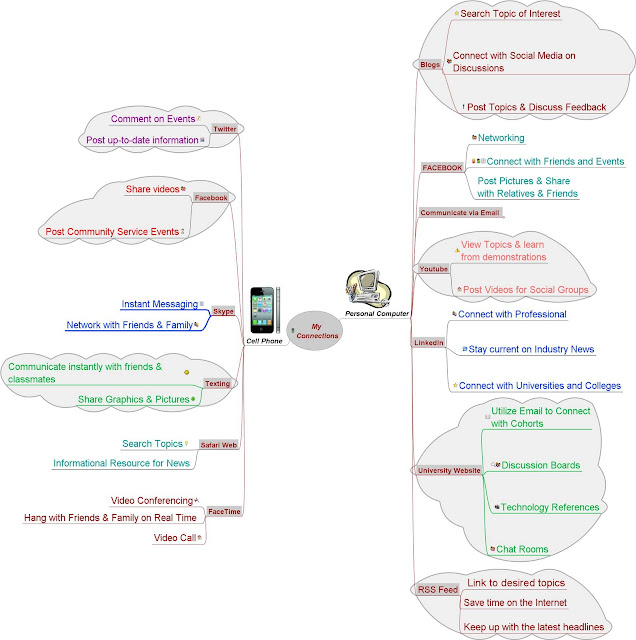Understanding how
people learn is a complex issue. There
are so many strategies to learning. How
does an Instructional Designer make sure he/she is tapping into each scholars
learning style? I truly believe in order
for adult learners to fully comprehend new material they have to have autonomy
and relatedness to the topic. The
psychological needs for motivation (Ormrod, 2011) have to be the main approach
that educators use to keep learners engaged.
Technology is another tool that I find interesting and most useful to the
educational arena today. Learners must
utilize technology resources while knowledge is taking place.
 |
| Learners utilizing Connectivism for instruction. |
Technology has such a fundamental aspect of
learning. A Transformational Leader or
Instructional Designer who utilizes technology in their learning environment
often uses most if not all of the learning styles. They are often conjoined with multipleintelligences to get the dynamics of the topic encoded into the learners’ brain
as a stored long-term memory. “People
can demonstrate different levels of proficiency across the eight intelligences
in each cognitive area” (Armstrong, 2000, p. 14) and this is prevalent with
online learning. For example, students
may have to create a blog assignment that has a maximum word length of 600 and
reflect on the assignment. To accomplish
this scholars are going to have to listen to audio, observe a visual of the
topic, or read materials to understand the concept (Linguistic), demonstrate an
example of the learned assignment (Spatial), monitor the length of the blog
(logical-math), and reflect on the assignment as well as students feedback from
discussion boards and online comments (Interpersonal). So most of the Multiple Intelligences out of
eight that includes Linguistic, Logical-Math, Spatial, Musical,
Bodily-Kinesthetic, Intrapersonal, Naturalist, and Interpersonal (pp. 6-7) were
utilized along with different learning styles in one assignment.
This is why
Connectivist learners have such an advantage on learning. They become skilled at environments where
they utilize technology resources and most of the learning styles. The world is steadily changing into the world
of technology. There are so many
different types of organizations that rely on technology for everyday business
from the world of Academia to Corporate America. Learners are going to have to keep up with
technology in order to stay competitive.
As an Instructional Designer, this course will insure that I have
learned the new technology and gain knowledge of all of the technical resources
that are available for constructing programs.
It will also allow me to Analyze, Design, Develop, Implement, and Evaluate
instructional classes to make sure employees are getting the information they
need in order to succeed in their environment.
References
Armstrong,
T. (2009). Multiple intelligences in the classroom. (3rd ed.).
Alexandria: Association for Supervision & Curriculum Development Retrieved
from http://site.ebrary.com/lib/waldenu/docDetail.action?docID=10326283
Ormrod
, J. (Performer) (2011). Motivation in learning [Web]. Retrieved from http://sylvan.live.ecollege.com/ec/crs/default.learn?CourseID=5693692&Survey=1&47=9547890&ClientNodeID=984650&coursenav=1&bhcp=1





